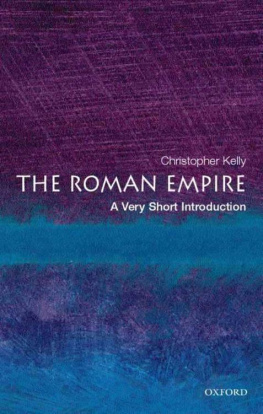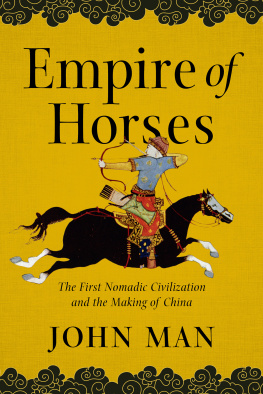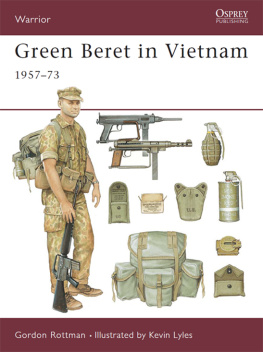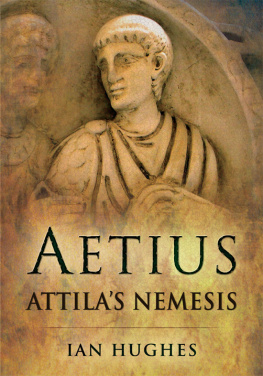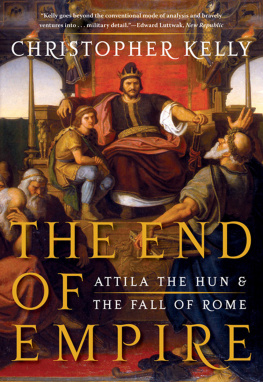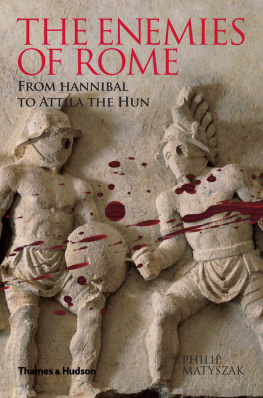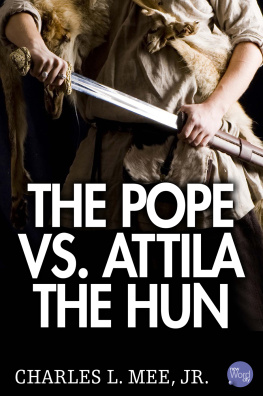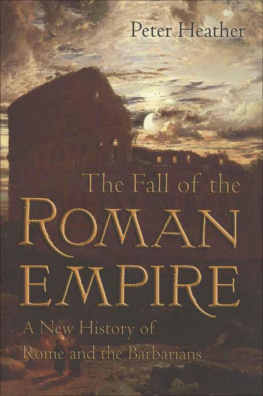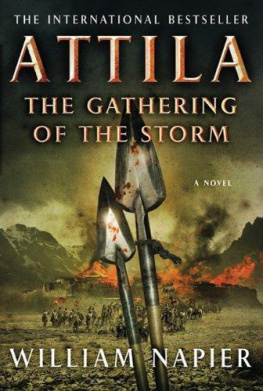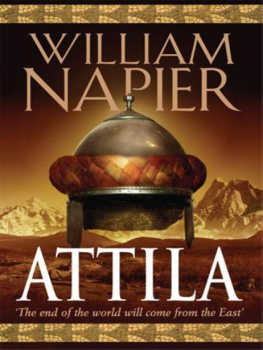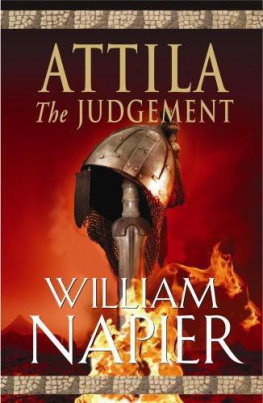W. W. NORTON & COMPANY
New York London
Waiting for the Barbarians, from the Collected Poems of C. P. Cavafy: A New Translation by C. P. Cavafy, translated by Aliki Barnstone.
Copyright 2006 by Aliki Barnstone. Used by permission of W. W. Norton & Company, Inc.
For information about permission to reproduce selections from this book, write to Permissions, W. W. Norton & Company, Inc., 500 Fifth Avenue, New York, NY 10110
1. Attila, d. 453. 2. HunsBiography. 3. HunsHistory. 4. RomeHistoryEmpire,
284476. I. Title.
D141.K45 2009
937'.09dc22 2009009072
W. W. Norton & Company, Inc.
500 Fifth Avenue, New York, N. Y. 10110
www.wwnorton.com
W. W. Norton & Company Ltd.
Castle House, 75/76 Wells Street, London W1T 3QT
ACKNOWLEDGMENTS
Warm thanks are due to a smallbut fiercely loyalband. For their thoughts, enthusiasm, and help I wish to particularly mention Julian Alexander, Richard Flower, Maria Guarnaschelli, Jrg Hengsen, Stuart Hill, Bettany Hughes, Gavin Kelly, Jan and Tony Leaver, Margaret Maloney, Rosamond McKitterick, Lily Richards, Will Sulkin, and Melanie Tortoroli. I am also most grateful to the Leverhulme Trust for its generous award of a Senior Research Fellowship, 20062008.
THE END OF EMPIRE
Now what will become of us without barbarians?
Those people were some kind of solution.
CONSTANTINE CAVAFY, Waiting for the Barbarians (1898)
PROLOGUE
THE STRAVA OF ATTILA THE HUN
C arefully concealed in the long grass that covered the plain, the Roman spies watched with growing fear and amazement. In the center of a cluster of tents pitched between wagons stood a splendid silken pavilion. Its open sides allowed a clear view of the body of Attila the Hun. He was short with a broad chest and a large head. Those who had seen him while alive reported that his eyes were small, his beard sparse and flecked with gray, his nose flatish, and his complexion dark. This was the powerful physique of a man who had died suddenly in his prime, a battle-hardened warrior used to fighting and to traveling for hours on horseback. This was the brilliant commander who had transformed a disorderly band of smash-and-grab nomads into a disciplined force that in the first half of the fifth century AD had marched a thousand miles across Europe from the shores of the Black Sea in Romania to the fertile fields of Champagne in France. Attila the Hun was one of the most frightening enemies ever faced by the Romans. In lightning raids his army destroyed dozens of prosperous and wealthy cities that had remained secure for centuries and even threatened Romethe Eternal Cityitself.
The Huns honored Attila in death as in life. His body, draped in rare oriental silks, glittered with magnificent jewelry, costly gifts from Roman emperors hoping to buy off an enemy whom they had repeatedly failed to defeat. On his shoulder gleamed a great golden brooch set with a single slice of onyx the size of a mans palm. Like the dark waters of the Danube glinting in the sharp summer sun, the deep purple stone flashed with the fire of burning brands held high by the horsemen riding wildly around the tent. The faces of these young men were disfigured and smeared with blood. According to the Roman historian Priscus of Panium, they had cut their long hair and slashed their cheeks so that the greatest of all warriors should be mourned not with tears or the wailing of women but with the blood of men.
Then followed a day of grief, feasting, and funeral games: a combination of celebration and lamentation that had a long history in the ancient world. Priscus may have been reminded of the games, movingly described by Homer, that the Greek hero Achilles held for his fallen companion Patroclus before the walls of Troy. Twelve centuries after Homer, the Huns raced horses to salute the achievements of their dead leader. That night, far beyond the frontiers of the Roman empire, Attila was buried. His body was encased in three coffins: the innermost covered in gold, a second in silver, and a third in iron. The gold and silver symbolized the plunder that Attila had seized, while the harsh gray iron recalled his victories in war. The tomb was filled with the weapons of enemies defeated in battle, precious jewels, and other treasures. The servants responsible for preparing the burial were killed so that they could not reveal its location. These, too, were honorable deaths, part of the strava , the Hunnic for a funeraland thanks to Priscus account the only word of Hunnic to have survived.
What most impressed the Romans secretly watching these ceremonies was the dirge solemnly intoned by the horsemen who galloped around Attilas tent. It was a slow, deep, rhythmical chant commemorating a great leader who had established an empire for his own people and hastened the collapse of Roman rule in western Europe. No Roman could hear these words without remembering the terror that Attila had inspired. No Hun could ask for a more fitting epitaph.
Attila the king,
Chief of the Huns,
Born of his father Mundiuch,
Lord of the bravest tribes.
He who captured cities,
He who brought fear to the Romans and their empire.
Their prayers moved him;
He accepted payments each year to save the rest from plunder.
Attila accomplished all this through his great good fortune.
He fell not by an enemys blow,
Nor by the treachery of his own followers.
But he died peacefully,
Happy in his joy,
Without pain,
His people safe.
Who can call this death?
When none considers that it demands vengeance?
N o one in the Roman empire had ever heard of the Huns. It was not until the 370s, a generation before the birth of Attila, that they first fought their way into history. Then reports reached Roman troops guarding the Danube frontier of the sudden appearance of a savage people north of the Black Sea. It was not known how far they had traveled (the possibilities, ranging from Mongolia to Kazakhstan, will be explored at the end of chapter 3). The newcomers were led by fierce warriors on horseback; their families followed slowly in covered wagons. Moving west across the steppes of Asia, they brought terror and disruption to the edges of Europe.
Around the Black Seain modern Ukraine and Romaniathe Huns encountered the Goths: first the Greuthungi (the collective label Roman observers applied to those who controlled the territory between the Don and the Dniester Rivers) and then the Tervingi (between the Dniester and the Danube). In 375 the Tervingi leader Athanaric marched north to reinforce a group of Greuthungi pushed back by the Huns advance. The campaign was unsuccessful. Athanarics camp on the banks of the Dniester was attacked in the night by Huns who had forded the river by moonlight. The Tervingi troops scattered, and the Huns swept onward, in the words of one Roman historian, like an avalanche from the mountaintops, carrying away or destroying everything in their path.


